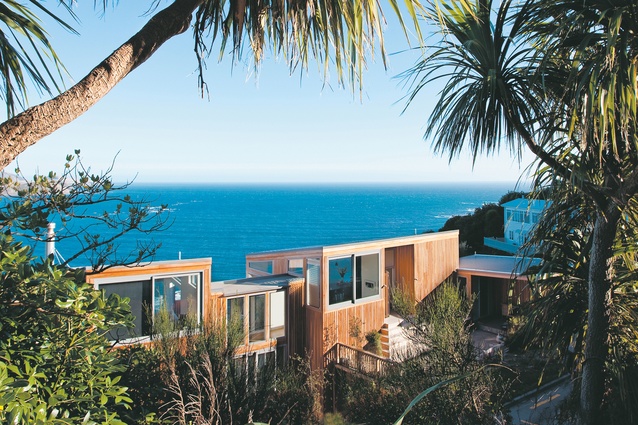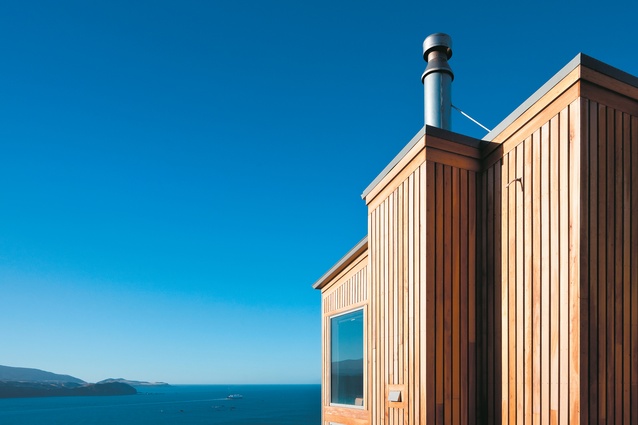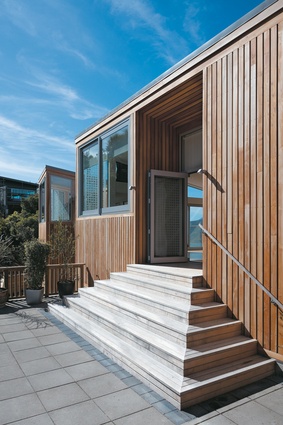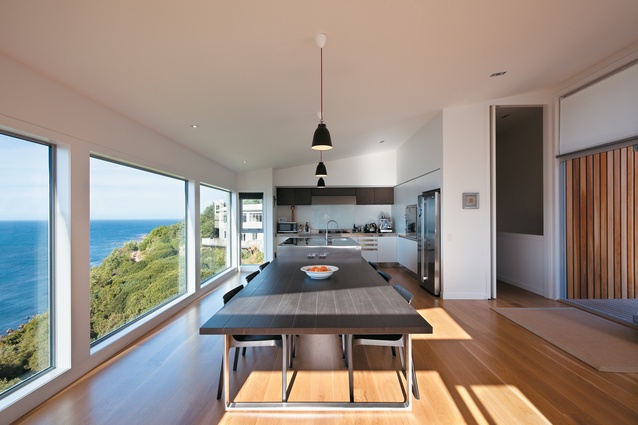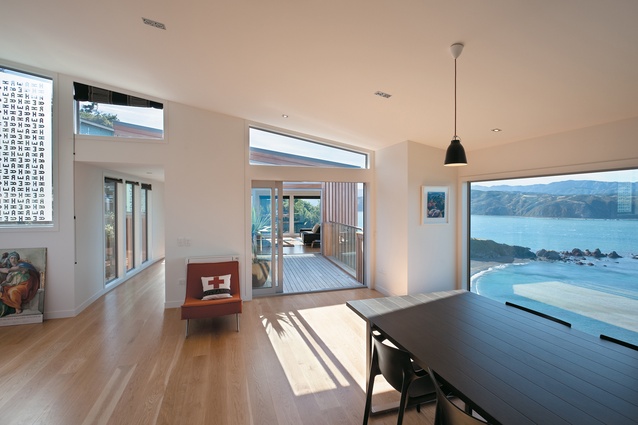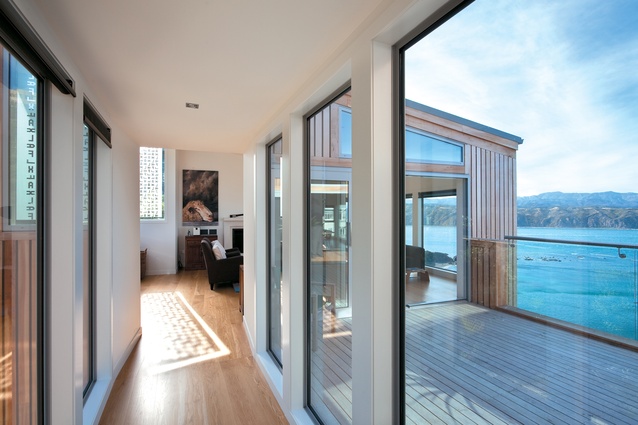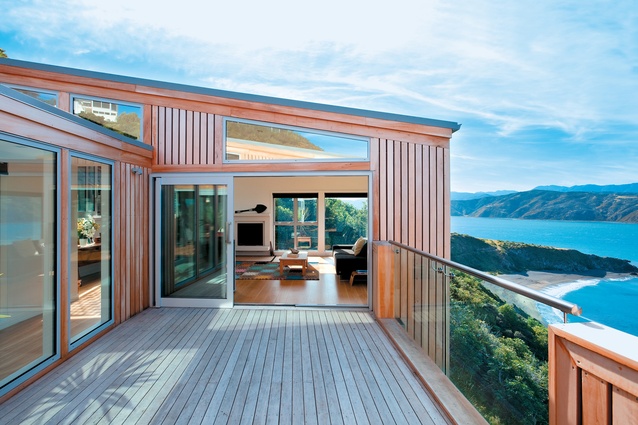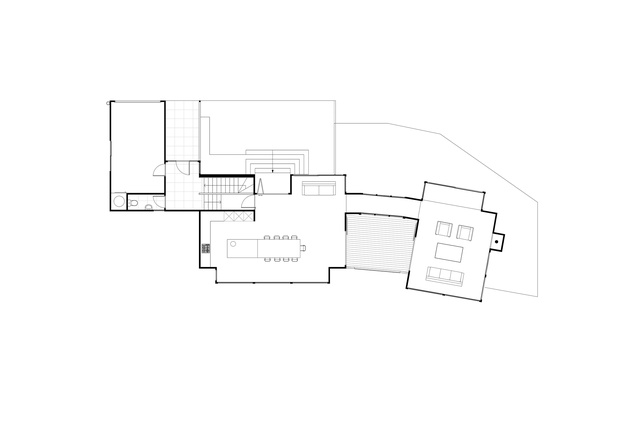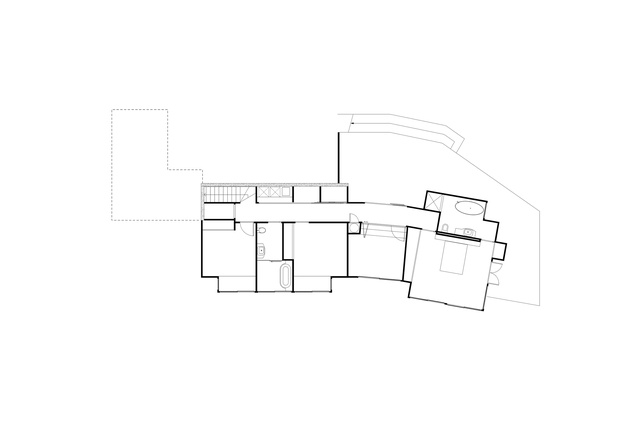Houses Revisited: The Hunn House
A house sitting on the edge of a Wellington cliff provides a challenge for architect Uche Isichei.
While the views from this site are remarkable, there is probably a good reason why the land wasn’t occupied sooner. Not so long ago it would have been considered impossible to build on sections similar to this.
Although this house now sits comfortably on the edge of a cliff that overlooks Wellington’s Breaker Bay and out past the Rimutaka ranges, building it was not an easy task. In addition to being on the edge of a south-facing cliff (which meant the house had to be designed for wind speeds of up to 225 kilometres per hour) architect Uche Isichei also had to contend with a large number of council-enforced easements, as well as exceptionally unstable land due to the subdivision’s developer dumping the section with fill from the excavation of the surrounding sites.
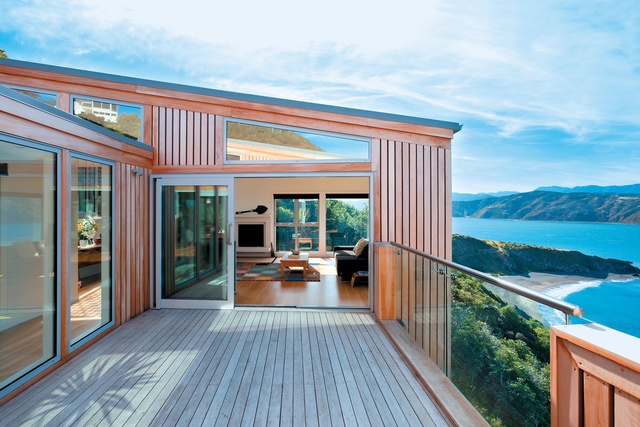
Naturally, on a site like this, the house promotes the outlook. After all, it is what the client has paid for. However, while the outlook from this house is expansive, it hasn’t influenced all of the design decisions and Isichei explains that the main driver of the design was the need to maximise the gain of the northern sun while also establishing privacy for the occupants.
The solution to this, despite the views being to the south, was to open the building up to the north, seemingly counter-intuitively, towards the hill. The ceiling drops down towards the cliff, and large windows are placed along the back of the house. To maximise the occupants’ privacy these north-facing windows have been sandblasted with a bespoke graphic design.
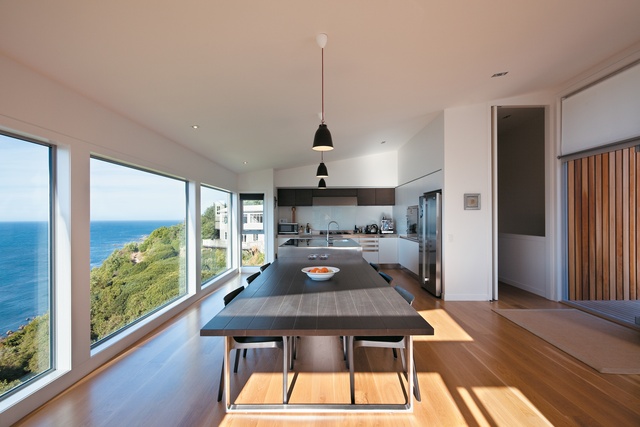
Because of the limitations of the building platform and with considerations about the effect of the built environment on such a open site, the house nestles within the grain of the hillside. This has been achieved by the slanted roofline and the plan that slightly kinks into the site. This kink also facilitates the fracturing of the upper level living spaces around a balcony, enabling sun to get deeper into the house.
The house doesn’t indulge in superfluous living spaces or bedrooms and there is a suggestion of intimacy throughout. This intimacy must be most welcome when the driving Wellington southerlies surge through the Strait.
This article first appeared in Houses magazine


